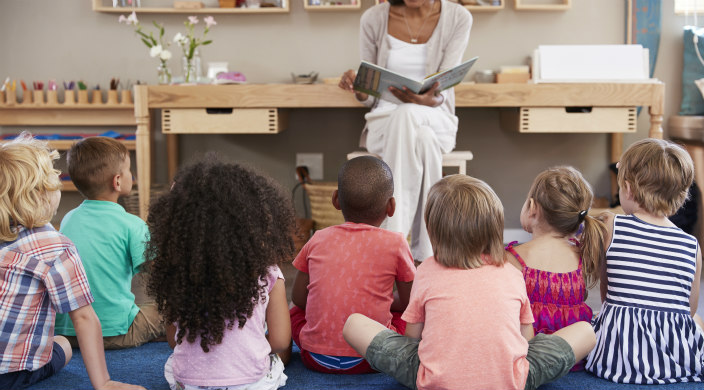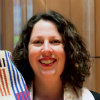
“Goodnight old lady whispering, ‘hush.’”
“Brown bear, brown bear, what do you see?”
“Let the wild rumpus start!”
How many children’s picture books can you recite by heart? When my children were small, they wanted to hear the same stories over and over again.
They wanted to hear about Max’s travels over far seas to dance the rumpus with the wild things in Where the Wild Things Are. They wanted to say goodnight to each and every item in the room while we read Goodnight Moon. They wanted to revel in the repetition of the brown bear noticing everything around him in Brown Bear, Brown Bear What Do You See?
I love reading books to my children. Each book carries a different message of optimism to help welcome little children into a social world. It seems as if these books are really love letters.
Good picture books are gifts of wonder to children. They do not have hidden agendas, but rather offer nourishment and a sense of hope. Picture books are experiential; they capture the feel of a hug, or the sounds animals make, or a rhyme we can’t get out of our heads.
As children get older, their books mature with them – sending messages of resilience, perseverance, inner strength, and optimism. They weave their way into a child’s sense of hope and possibility. They strive to teach our children how to live in a more complicated social reality.
This idea parallels how Jews encounter the Torah. Since ancient times when the Torah was read in the marketplace, engagement with our people’s central narrative has helped us navigate our world with hope and strength. The Torah, too, is a love letter.
What happens when we suspend disbelief, soften our stance, and let the ancient text of the Torah wash over us? We become like children being read to again. We can revel in the images and the sounds of the words and connect to or reject characters. We can get swept up in the ideas, and simply fall in love with language.
Parents learn from children all the time. As our children grow, we grow. And when we open ourselves to their perspectives, we, too, suddenly recognize the wonder of gravity that holds trees in place, the stunning beauty of a sky filled with animal-shaped clouds, and the sweet, simple delight of tasting one of our favorite fruits.
As contemporary Jews, we are invested in drash (interpretations of Torah passages). We squeeze meaning from the text, wrestling with it, and seeking out the wisdom and insight it can bring to our lives. When we engage with the Torah and work at interpreting it, we grow intellectually and spiritually. We find that it is relevant to all the very different stages of our lives.
There are no vowels, periods, commas, or musical notations in the Torah scroll. In order to chant from the scroll, we must puzzle together the vowels that belong to the consonants to make words. We need to learn where the sentences end, which ones are questions, and where the pauses are. We need to learn how to animate the Torah, with our breath, our voice, our intellect. The Torah demands our partnership.
An unread children’s book is like an unfurled Torah scroll lying alone in wait. Somebody needs to bring the words alive by narrating and transmitting the wonder it contains. The reverse is true as well: an unread Torah is like an unread book; we read to our children to help nurture their capacity for wisdom, strength, and compassion. The Torah is passed down as a guide for living. It contains stories of all kinds – stories that resonate with us and stories that repulse us. It is a mirror of life in all its contradictions and beauty.



